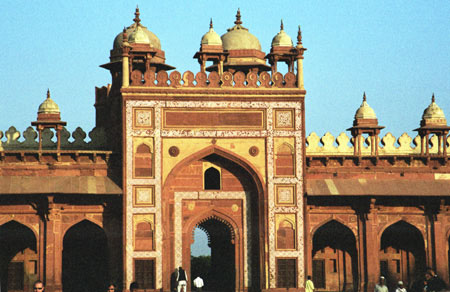
Angled somewhat to exclude as many of the hawkers as possible. Inside there's a huge courtyard, with a massive mosque, the Jama Masjid, on the other side.
The square (and the city) are all aligned with the mosque, which is aligned with Mecca.
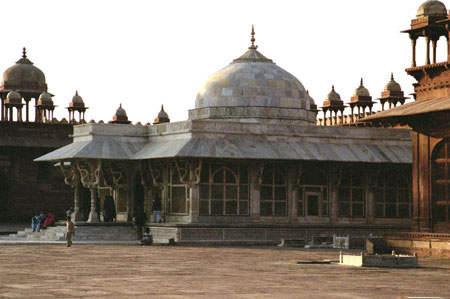
The tomb was built in 1570. Salim Chisti was a Sufi saint, and Akbar came to him looking for help in having a son. The jalis - screens carved out of marble - show superb workmanship.
To the left, in the shadows is part of the Jama Masjid, where Chisti taught.
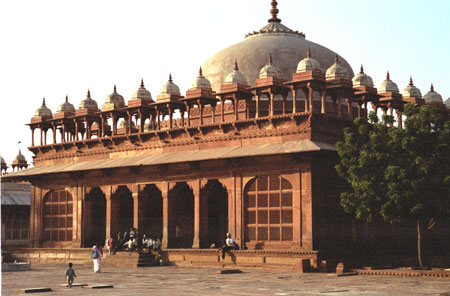
Islam Khan was the grandson of Salim Chisti. His tomb is directly to the right of his grandfather's, overshadowing it in size.
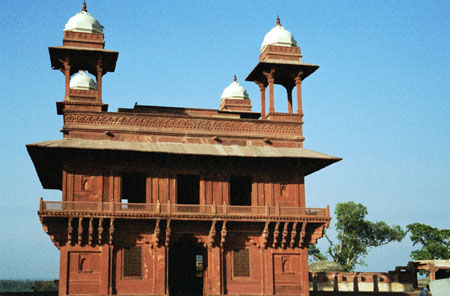
The Diwan-i-Kas is also known as the Jewel House or the Ekstambha Prasada (Palace of Unitary pillar)
Inside the building there's a central stone column. It supports four crisscrossing walkways that go across the upper level.
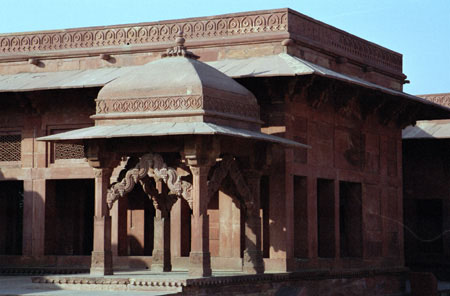
Akbar had astrologers on staff, who he consulted before making important decisions. He used Hindu astrologers and Muslim munajjims, just to play it safe. This is where they made their pronouncements.
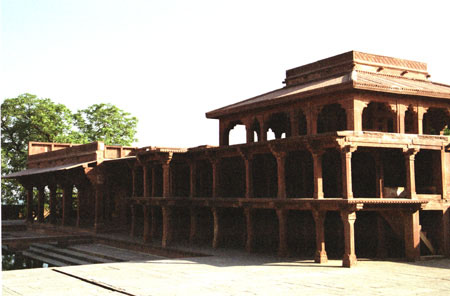
Khwabgah
This was the emperor's building. On the upper level there was a living room, library and a place where he napped or entertained women. The lower level was the Diwan-khana-i-khas, or audience hall.
Apparently, there were sliding stone doors and elaborate interiors, but the building was looted later on.
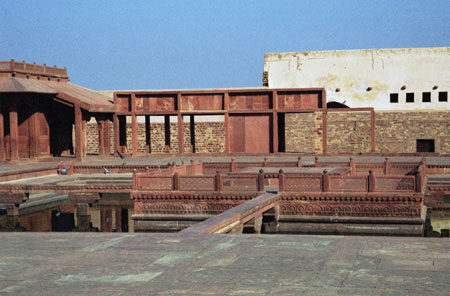
Akbar liked variety in his wives (especially if marrying them cemented alliances). He had a Christian wife and a Hindu wife, and this one was Turkish. (In the local parlance she was the Rumi Sultana, which sounds to me like a flavor of ice cream.)
Though it doesn't look like much at this point, the quarters were on the left. The pool in front is Anup Talao, and was a famous spot for music.
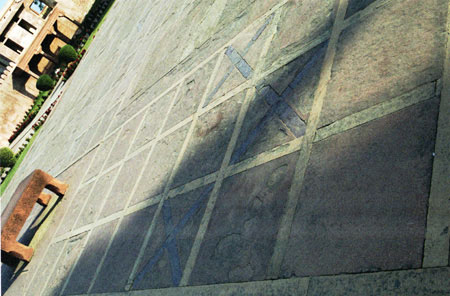
Inside the palace complex, and apparently played with live pieces.